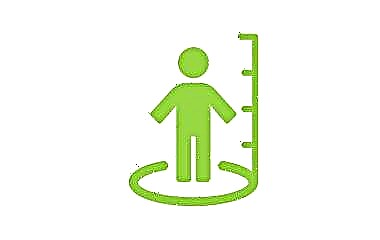Many parents are alarmed when the crumbs' eyelids swell, redden and become inflamed, and incomprehensible mucus appears in the baby's eye. If these symptoms occur, it is necessary to take decisive action, as discharge from the eyes of a newborn can indicate serious problems.

Infographics of neonatal conjunctivitis
Causes of eye discharge
Most cases of eye discharge are caused by neonatal conjunctivitis. During this disease, a sticky yellow or white coating appears from the eyes.

Festering eyes of a newborn
Pricin why does a newborn have watery eyes, and white discharge, much more:
- Infectious diseases. If a bacteria, virus, or fungus gets into the eye, the eyelids can stick together, crusts and discharge. Most often, infection occurs during childbirth. The most likely cause of infectious neonatal conjunctivitis is chlamydia and gonococcus. They get into the baby's eyes if the mother has a sexually transmitted infection. Now infectious conjunctivitis occurs less frequently, since all pregnant women undergo a mandatory examination.
- Blockage of the lacrimal canal. It occurs in 20% of cases. In the corners of the eyelids, there are small holes for tears to drain. If these channels become clogged, a favorable environment for bacteria develops. In this case, infectious conjunctivitis is secondary.
- Foreign bodies in the eye. Dust or dirt can also lead to infection. If a parent notices that the baby often rubs his eyes and blinks, you need to rinse them to remove the foreign body.
- Cold. Sometimes respiratory infections can be accompanied by mucus from the eyes.
- Chemical influences. Sometimes conjunctivitis develops as an adverse reaction to eye drops or ointments. The inflammation begins within one to two days after taking the medication. In this case, it is enough just to stop taking them, and the edema will disappear by itself.
- Allergic reactions. They are accompanied by lacrimation.
Types of eye discharge
Eye discharge in an infant may be normal or indicative of pathology.
What discharge is normal
The first tears begin to appear at 1.5-2 months, in some cases - at 4. They are needed to protect the eyes from pathogenic organisms and moisturize the mucous membranes.

Newborn eyes watery
Almost everyone, waking up, can see dried tears in the corners of their eyes. Normally, the channel easily passes water through itself. If this does not happen, then the tears accumulate and cease to protect against pathogens. On the contrary, a favorable environment is created for their development. As a result, the eyes turn red and may rot.
Therefore, the presence of tears is a normal state, provided that they have somewhere to drain. If the baby is only a few days old, then in the lacrimal-nasal canal normally in the twentieth part of the children there is a plug, which resolves itself after a few days. If this does not happen, this is a reason to see a doctor.
Also, in newborns, mucin is normally produced - a special substance that is necessary to prevent dry eyes.
What does mucus mean after sleep
Mucin is a slimy liquid. Considering that newborns sleep almost all the time, the remains of this substance accumulate around the eyes. This is normal, but parents should be careful with hygiene to prevent infections.
Possible diseases
In addition to neonatal conjunctivitis and blockages of the lacrimal canals, there can be a number of other conditions that lead to eye discharge. They are all interconnected.

Eyes fester after sleep
Important! Neonatal conjunctivitis may result from a blocked tear duct. In turn, blockage can occur due to infections, which will only worsen the course of the disease. That is, it can be both primary and secondary.
Clogged tear ducts are also caused by:
- Intrauterine developmental disorders.
- Bruises and injuries. Any trauma in the area of the lacrimal canals can lead to blockage and discharge from the eyes.
- Tumors, cysts and other growths.
Thus, serious illnesses can also cause discharge from the eyes.
Diagnostic methods
When a parent seeks a doctor, he can diagnose the existing pathology using the following methods:
- Samples from the conjunctiva of infants, which are then analyzed for the microflora present in them through inoculation for gonorrhea, also determines the presence of chlamydia using culture methods, Giemsa staining, enzyme immunoassay, and a number of others.
- Nucleic acid amplification method. Has shown high efficiency for the detection of chlamydia.
- Cultural methods for determining the virus. They are used only if there is a suspicion of a viral etiology of the disease (if a child has skin lesions or an infection is found in the mother).
Should I see a doctor
You need to consult a doctor at the slightest suspicion of neonatal conjunctivitis or blockage of the lacrimal canal:
- Abundant discharge from the conjunctiva, which is systematic.
- Swollen eyelids. Especially you need to sound the alarm if you can't see your eyes.
- Redness of the eyelids and eyeball.
- Superficial keratitis. This is an inflammation of the cornea, in which the eyes turn red, photophobia appears, and vision deteriorates.
- Infection of tissues near the eye.
When the lacrimal canal is blocked, the doctor prescribes probing, washing. Expansion probes can also be used.
With neonatal conjunctivitis, the method that will be used to treat the child immediately after birth depends on the pathogen that caused the pathology. This is usually systemic or topical antibiotic therapy. For the herpes form, acyclovir is prescribed. A specific treatment can only be prescribed by a doctor. If the disease is diagnosed in time, it is completely cured.
Preventive measures
To prevent conjunctivitis in a child, you must follow these recommendations:
- Wash hands before caring for a child, especially before wiping his eyes.
- Try to prevent babies from touching their eyes.
- Wash baby supplies frequently with a non-allergenic detergent.
- Do not wash your baby's eyes with your hand, handkerchiefs or paper napkin. Also, it is not allowed to use a cotton pad for these purposes. It is always important to use sterile items.
- Moisten your eyes before opening your newborn's eyelids on your own. To do this, use a gauze soaked in sterile saline. If not, then it is possible to use warm boiled water.
- If crusts appear on the eyelids of the child, then they cannot be removed dry.
- It is not recommended to use different decoctions (including chamomile) for the hygiene of the baby's eyes, as they can lead to infection or allergic reactions, as a result, tearfulness and the appearance of white discharge from the eyes of the newborn.
Important! The peephole is cleaned several times a day.
Thus, if you follow the recommendations for eye hygiene, you can avoid discharge from them.



